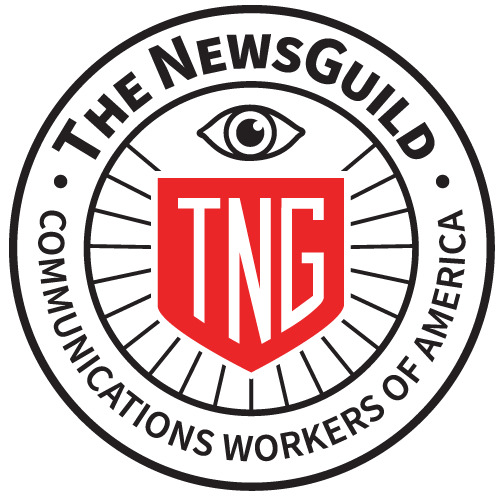Gannett and GateHouse merged in 2019.
Alden Global Capital gobbled up Tribune Publishing in 2021.
Alden made a play for Lee Enterprises in 2022 – and may make another.
“Consolidation is killing local news,” said NewsGuild President Jon Schleuss. “We will continue to fight consolidation and we call on the federal government to review news industry megamergers by examining how they negatively impact workers, readers, communities, local reporting and U.S. democracy.”
The NewsGuild detailed the disastrous effect of the mergers in comments filed with the Federal Trade Commission and the Department of Justice and urged the agencies to undertake more stringent reviews of mergers and acquisitions. The agencies are planning to revise the way they evaluate mergers to improve government oversight and prevent anti-competitive deals.
Last year the federal government did little to review Alden Global Capital’s takeover of Tribune Publishing. But researchers at University of North Carolina’s Hussman School for Journalism found that Alden reduced headcount at twice the rate of the industry average.
In the 21 months between May 2020, when the Alden’s acquisition of Tribune was finalized, and March 2022:
- Tribune cut 55% of the staff at the Chicago Tribune
- Cut 45% of the staff at the Morning Call in Allentown, PA
- Eliminated 55% of the staff at the Hartford Courant
The Guild’s comments to the FTC and DOJ said that Gannett, the biggest chain, and Alden Global Capital, the hedge fund known as “the destroyer of newspapers,” are emerging as a duopoly that harms consumers and employees.
They have depressed wages, with starting salaries well below industry norms. And both Alden and Gannett continue to fight journalists and refuse to raise wages. Both have plenty of cash on hand.
They have also jacked up subscription rates well above the industry average, a ploy that disproportionately affects seniors and those without reliable high speed internet.
The crisis in local news extends far beyond the publications owned by Gannett and Alden. The collapse of the busines model means residents can no longer get the information they need.
- In the last decade, the number of local newspaper journalists has been cut in half, down from more than 70,000 to just 35,000.
- In the 15 years leading up to 2020, more than one-fourth of the country’s newspapers disappeared.
- At least 2,100 U.S. newspapers have folded since 2004
- 1,300 communities have become “news deserts.”
When journalists’ jobs are cut, meetings of government officials with the public are not covered. Budgets are voted on and contracts tendered without outside scrutiny. According to News Hole: The Demise of Local Journalism and Political Engagement, a study by Professors Danny Hayes and Jennifer Lawless, one out of every three stories about school boards in 2003 had disappeared by 2017.
And scholarly research suggests that towns pay higher rates for municipal bond offerings when the local newspaper shuts down because finance companies assume a higher risk of corruption. They also experience higher rates of municipal taxation when the local paper closes.
The loss of news also foments a more acute polarization of local politics. In communities that have no newspaper, fewer people vote and the cost of their government increases. Partisanship increases with the loss of the community connection created by common sources of information.
“The FTC and DOJ need to restrict further consolidation of the news industry,” Schleuss said.
Photo at top: George Kelly rallies the crowd at a protest outside Alden’s headquarters in New York, May 2018.

